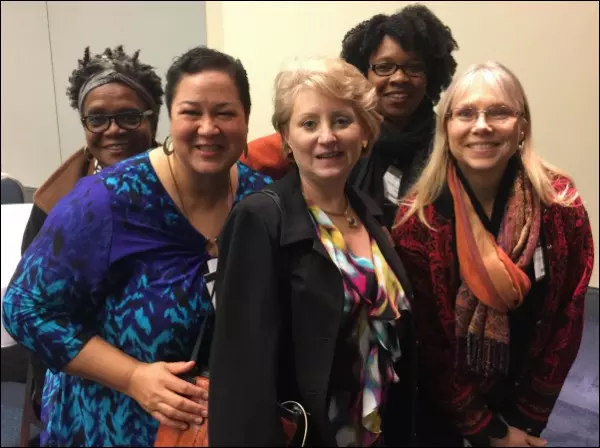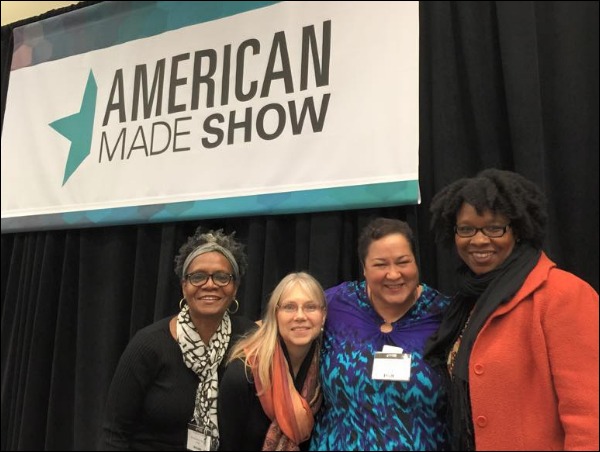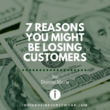Earlier this month, I attended the American made Show and the Arts Business Institute in Washington, DC. Hosted by Wendy Rosen (pictured in the front with me and some IBN members), the American Made Show is the premier wholesale trade show for handmade American made products. The Arts Business Institute is hosted in conjunction with the trade show to provide Makers and Handmade Entrepreneurs with opportunities to learn and prepare for trade show attendance in the future. It was a really incredible experience.

Types of Sales Streams
Carolyn reminded everyone that there is more than one way to skin a cat (so to speak). So often, we become wedded to one way of doing things to the exclusion of all others. While I think it's important to focus on things that do work, and not become distracted by things that might work, I also think it's important to understand and be open to new options. In addition to wholesale and retail, depending on your product, Carolyn mentioned other ways to sell products, including: licensing deals, freelance and commissioned design, trunk shows, open studios, and pop up appearances.
(The pop up idea is especially popular now. You can read more about them in this New York Times article).
Consultative Selling
Carolyn says that this is all about telling people what to buy. It's like a consultation; you find out what a prospective customer wants, and consult with them about whether you can provide it. This is all about selling the concept of your products, more than actually selling the products themselves.
Upselling
Carolyn discussed some super ways to turn the sale of one product into the sale of two or more products. For example, if a retailer is buying a group of your handmade necklaces, you can bundle complementary products like ear rings or scarves that make a nice display, and sell the group of products as a bundle. Other examples include selling a frame with your painting or selling wash cloths or bath poufs with your handmade soap.

One-of-a Kind Sales
Carolyn dispelled the myth that Makers and Handmade Entrepreneurs cannot sell one-of-a-kind items in bulk to retailers. Some of the tips she offered to make this happen are to remember to sell the concept of your products and not the products themselves.
Carolyn also suggested what she called the “Pick Box” approach, which she says is especially successful during the months immediately preceding the holiday season, and especially for one-of-a-kind artwork and jewelry.
A “Pick Box” is a box of products carefully selected for presentation to your best retail customers — the ones who are regular and repeat buyers — in a box that you mail to them. You package up a selection of custom or one-of-a-kind products and identify 5 or 6 retail store owners/buyers who want to have a chance to buy them. You let them know in advance what you are doing, and you send the box to the first retailer, who buys some of the pieces and then packs up the rest and sends them to the next retailer.
Payment can be made via credit card or whatever other prearranged options you have provided, and you can deduct the price of shipping so retailers do not lose money by shipping the box to the next retailer.
Obviously, you could only do this with your best customers who agree in advance to hold the merchandise for no more than a specific period of time, but if you have one-of-a-kind products sitting on your shelf as the holidays approach, it could be a great way to sell them during a season when they are highly likely to be purchased in retail stores. It's easy for the retailers too, because they don't have to do much to browse and buy.
Carolyn offered a ton of other ways to sell products to retailers. If you make the products you sell, I encourage you to check out the Arts Business Institute, a non-profit training program for artists.
Best and Success!
![]()



